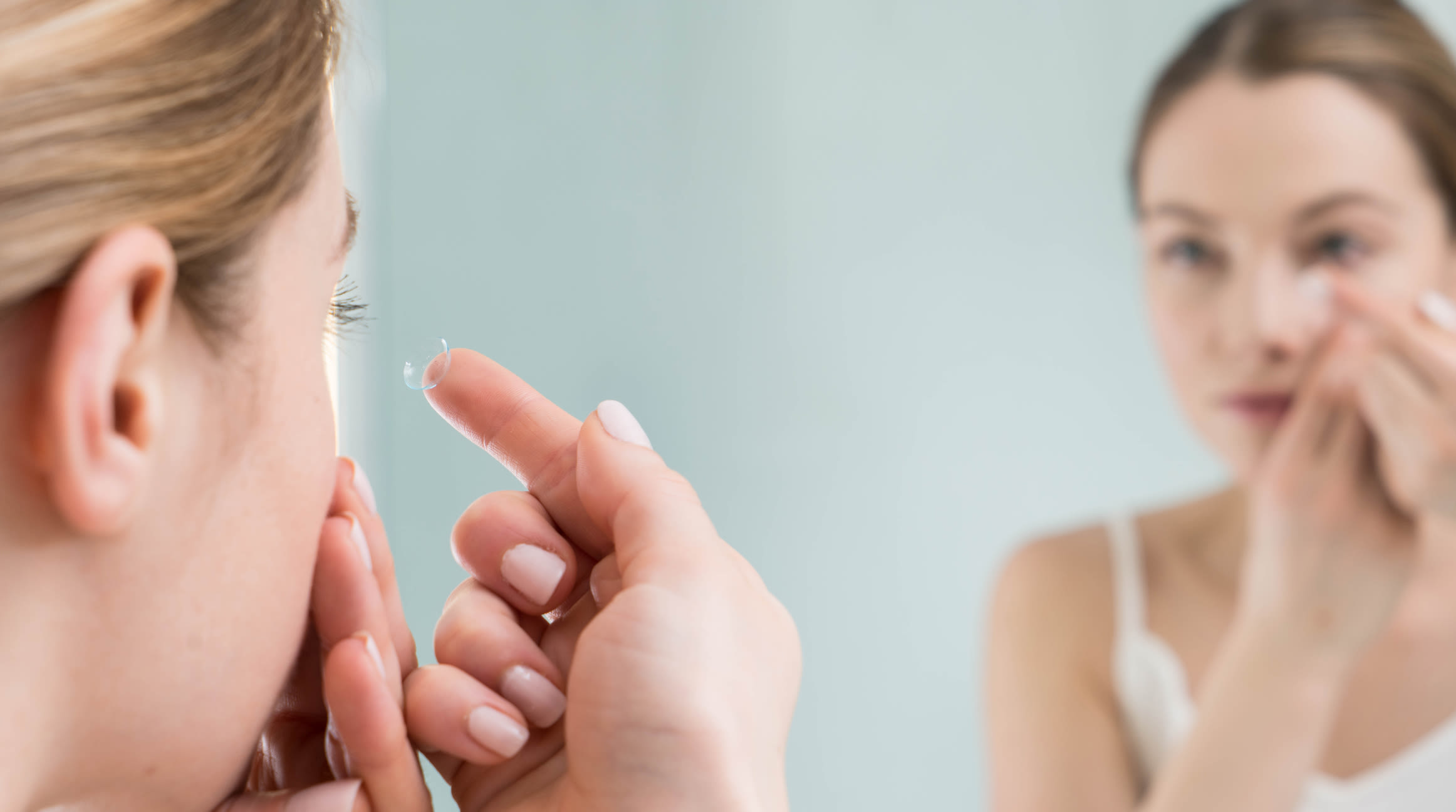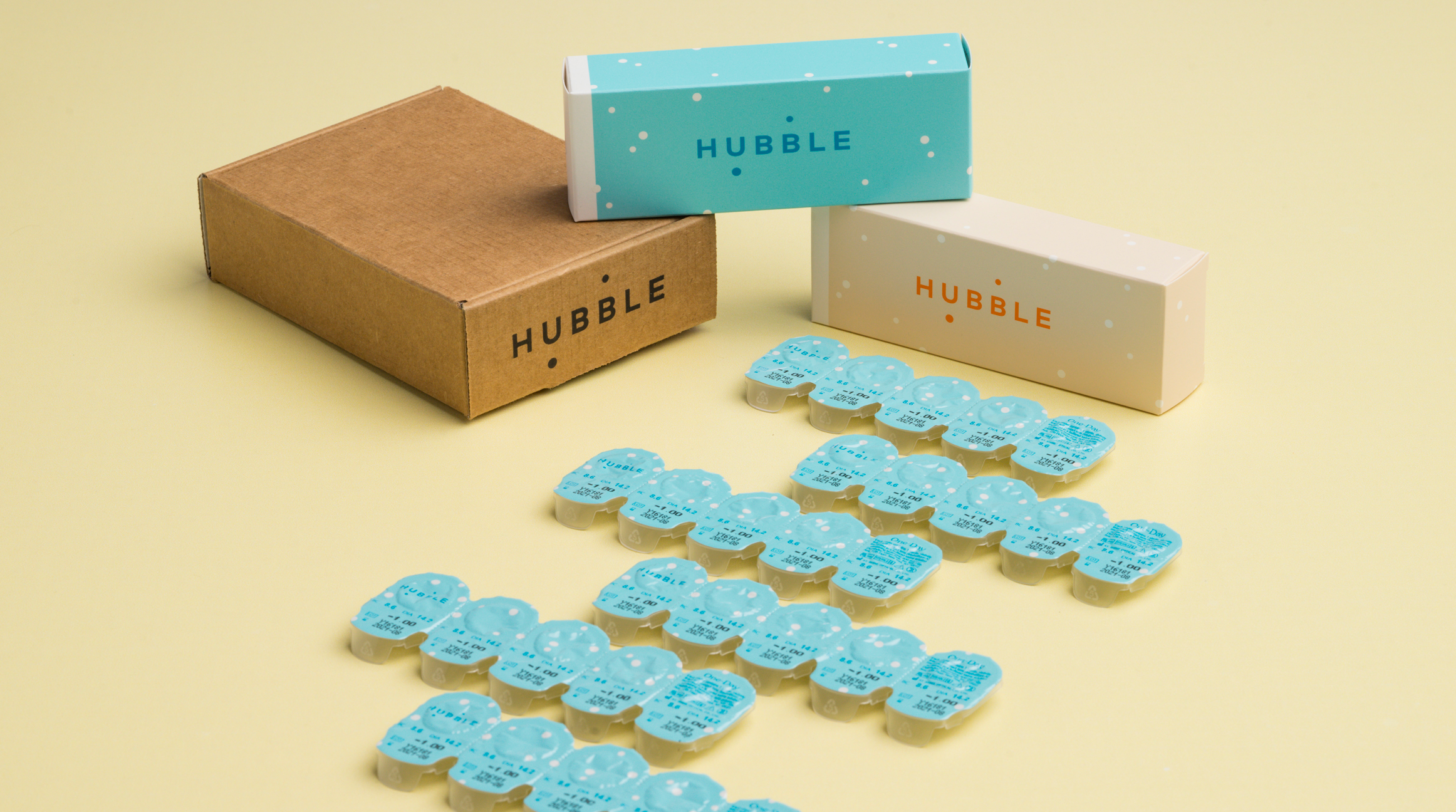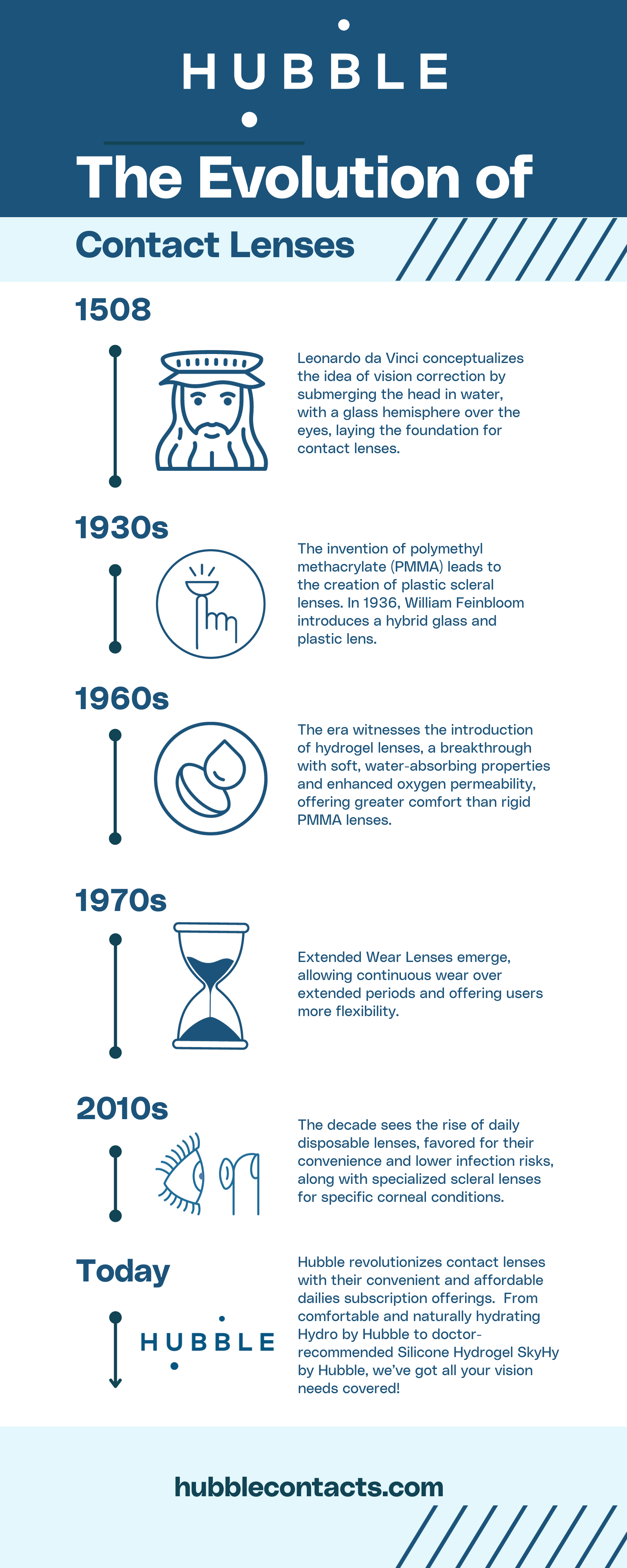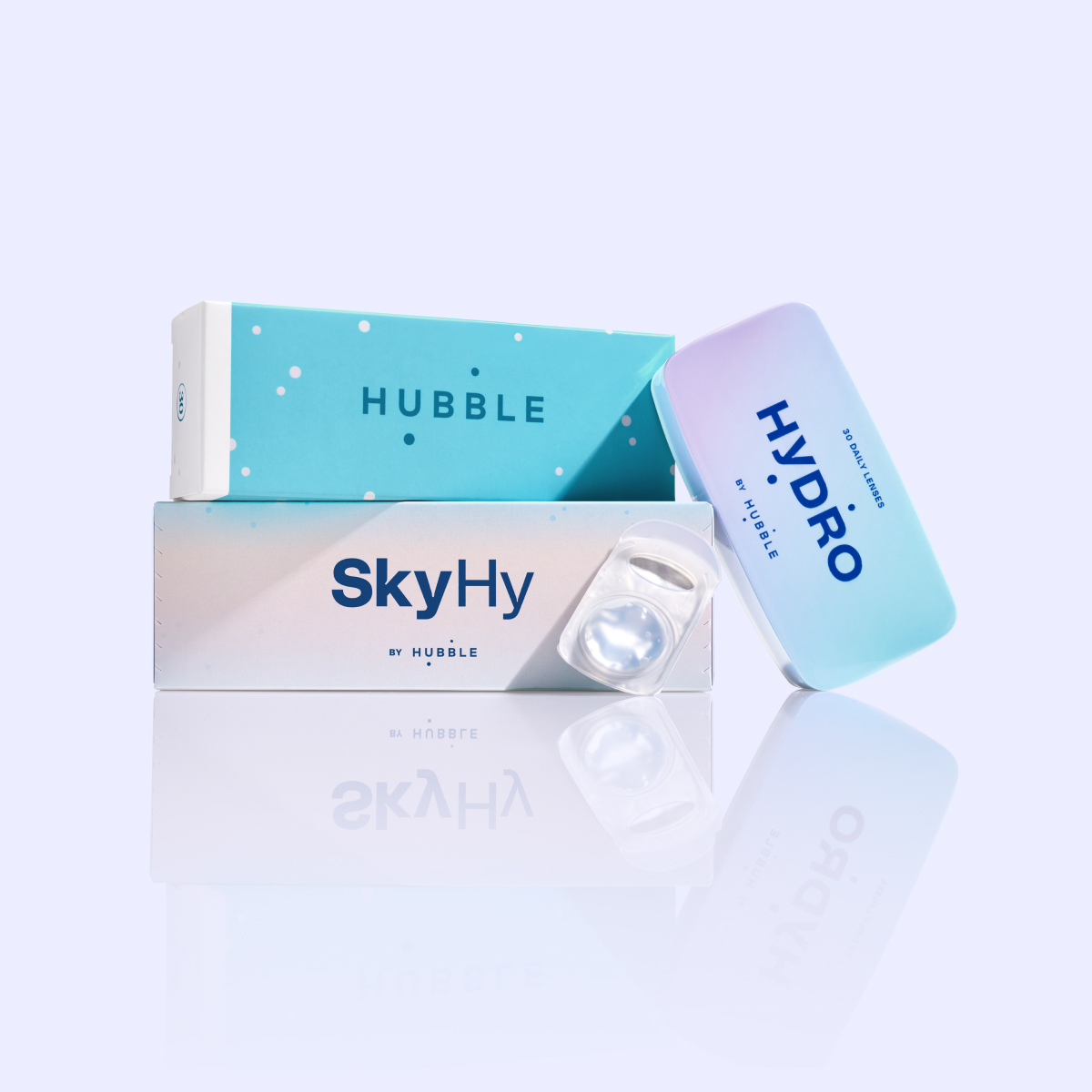How Do Contact Lenses Work? A Closer Look at the Science Behind Vision Correction

Contact lenses present many advantages for those who use and wear them regularly. Ultimately, your lenses are medical devices– small, curved pieces of plastic or rigid materials that are placed directly onto the surface of the eye.
Contacts are designed to correct vision or for cosmetic uses like changing the color of the eyes. The correction of vision is generally a more advantageous reason for wearing contacts. The thin material of the lens can feel more natural than the bulk of eyeglasses and having to keep track of glasses. Prescription Contact lenses can be used to correct nearsightedness, farsightedness, astigmatism, and presbyopia.
With all this modern technology available, can you believe vision-correcting lens devices have their roots back in the sixteenth century? If you’ve ever found yourself wondering just how do contacts work, keep reading as we explore the science behind these incredible inventions millions use every day!
How Do Contacts Work? The Science of Correcting Vision: Understanding Refractive Errors
Refractive errors are vision problems caused by the eye's inability to properly focus light on the retina. The cornea and lens of the eye work together to bend or refract light and focus it onto the retina, which then sends signals to the brain, allowing you to see clearly. When there is a mismatch between the length of the eyeball and the curvature of the cornea and lens, refractive errors can occur. The main types of refractive errors include:
Myopia (Nearsightedness): commonly known as nearsightedness, is a vision condition in which close objects can be seen clearly, but objects farther away appear blurry. This occurs when the eyeball is too long or the cornea (the clear front part of the eye) has too much curvature. As a result, light entering the eye is focused in front of the retina instead of directly on it. This can be caused by a combination of genetic and environmental factors.
Hyperopia (Farsightedness): Hyperopia is the opposite of myopia. In hyperopia, distant objects can be seen more clearly than close objects. This can result from the eyeball being too short or the cornea having too little curvature.
Did you know? Hubble Contacts can serve as your vision solution for a wide range of sight issues, including nearsightedness and farsightedness. You can order contacts online with different levels of correction for each eye depending on your unique needs!

Astigmatism: Astigmatism occurs when the cornea or lens has an irregular shape, causing distorted or blurred vision. Both near and far objects may appear unclear.
Presbyopia: This is an age-related condition that typically occurs around the age of 40. The eye's lens becomes less flexible, making it challenging to focus on close objects, particularly when reading. Multifocal, also referred to as Progressive contact lenses, correct Presbyopia.
How Prescription Contact Lenses Sit on Your Eye: The Role of the Cornea
Contact lenses are designed to fit comfortably and safely on the cornea to improve vision. The fitting process involves considering various factors to ensure that the lenses provide clear vision, are comfortable to wear, and maintain the health of the eyes. Here are some key aspects of contact lens design and fitting:
Corneal Measurement
The first step is to measure the curvature of the cornea. This is often done using a device called a keratometer, which helps determine the base curve of the contact lens. The base curve should match the curvature of the cornea to ensure proper fit.
Lens Diameter
The diameter of the contact lens is important in achieving a good fit. It should be appropriate for the size of the cornea and the surrounding eye structures. A properly sized lens ensures that it covers the cornea without irritating the surrounding tissues.
Material and Oxygen Permeability
Contact lenses are made from various materials, each with different levels of oxygen permeability. Oxygen is essential for maintaining the health of the cornea. Modern contact lenses are designed to allow sufficient oxygen to reach the cornea, reducing the risk of complications.
Prescription and Vision Correction
Contact lenses are prescribed based on an individual's refractive error (myopia, hyperopia, astigmatism, or presbyopia). The prescription is translated into the appropriate lens power and design to correct vision effectively.
Tear Film and Moisture
Contact lenses need to stay moist to provide comfort and prevent dryness. Some lenses are designed to retain moisture, and others are made with materials that mimic the natural tear film to reduce dryness and irritation.
Regular Follow-Up and Adjustments
After the initial fitting, individuals need to have regular follow-up appointments with their eye care professional. This allows for adjustments, if necessary, to ensure that the lenses continue to fit properly and that the eyes remain healthy.
Proper care and hygiene are also crucial when wearing contact lenses. Users should follow the recommended cleaning and disinfection procedures, adhere to the prescribed wearing schedule, and promptly address any discomfort or vision changes by consulting with their eye care professional.
How Do Your Eyes Adjust to Contact Lenses?
There is no one-size-fits-all timeline for getting used to contact lenses. Everyone will adjust at a different rate and the adjustment period will vary based on how fast you adapt to contact lens care. Typically though, most people will need 10-12 days to get used to wearing contact lenses.
This learning curve will not only be based on how well your eyes physically adjust but also on how quickly you adapt to cleaning and sanitizing your lenses and inserting and removing them. Remember, patience is essential for a successful transition to wearing contact lenses. Learning to adjust to the newness of becoming a contact lens wearer can be an experience on its own. How long it takes to adjust to contacts will depend on how you respond to contact lens use and care.
As a new contact lens user or if you are transitioning from eyeglass wear, you will discover an empowering and convenient way of correcting vision that will quickly become second nature.
To ensure a comfortable and enjoyable experience when using new contact lenses for the first time, follow the aforementioned tips to adjust to this new lifestyle. Ultimately, getting used to contacts takes a little bit of time, trial, and error while providing correct vision and comfort.

The Evolution of Contact Lens Materials and Designs
The development of contact lenses has undergone significant advancements over the years, with improvements in materials, designs, and manufacturing processes. The fascinating story begins with Leonardo da Vinci in 1508.
Although not practical at the time, da Vinci is credited with the idea of correcting vision by submerging the head in a bowl of water with a glass hemisphere covering the eyes. This concept laid the groundwork for the idea of placing a lens directly on the eye.
The development of polymethyl methacrylate (PMMA) in the 1930s paved the way for the manufacture of plastic scleral lenses. In 1936, optometrist William Feinbloom introduced a hybrid lens composed of glass and plastic.
The introduction of hydrogel lenses in the 1960s marked a significant advancement. These soft, water-absorbing lenses were more comfortable and allowed for oxygen to pass through to the cornea. Hydrogel lenses quickly gained popularity for their improved comfort compared to rigid PMMA lenses.
Extended-wear lenses, allowing contacts to be worn continuously for an extended period, were introduced in the 1970s. This allowed wearers more flexibility in their use of contact lenses.
In the 2010s, daily disposable lenses gained popularity for their convenience and reduced risk of infections. Specialized designs, such as scleral lenses for specific corneal conditions, were also introduced.
At Hubble, we’ve innovated the contact lens experience from the ground up. Our Hydro by Hubble Contacts features the slimmest contact lens packaging in the world, with less waste, less plastic, and more convenience. The unique hygienic touch packaging always places the lens correctly face down, allowing the wearer to only touch the outer lens surface for a quicker, more hygienic experience.
As you can tell, contact lens material, safety, and comfort have come a long way over the years. Our newest offering, SkyHy by Hubble contact lenses are made with doctor-recommended silicone hydrogel material for enhanced oxygen permeability.
All of our disposable contact lenses are designed for all-day comfort with a trim, thin edge, making them extra easy to pop in and out.
Types of Contact Lenses: From Soft to Rigid
There are several different types of contact lenses available, including soft and rigid varieties with specific uses in correcting various vision problems.
Soft Contact Lens
These contact lenses are made from a softer, more pliable (flexible) material. They are made with a hydrogel and are often the most prescribed contact due to their ease of use and comfort.
Hard Lens/Rigid Gas Permeable Contact Lenses
These contact lenses are a firmer or harder type of material that is more durable and does not bend or fold. Also called hard lenses, Rigid Gas Permeable (RGP) contacts can provide sharper vision, but do require enhanced cleaning and disinfection on the part of the wearer.
Daily Wear (Dailies)
Daily wear contacts (dailies) are the most commonly prescribed option. These lenses are worn throughout the day and then removed each night and placed in a contact lens case with a fresh solution. This helps disinfect the lenses and prepare them to be used again the following day.
All Hubble Contact Lens types are daily disposable lenses. Daily contact lenses are the safest and best option for contact wearers as a fresh new set of contacts every time will minimize the build-up of deposits, dust, pollen, and other irritants that make regular contacts more prone to attracting irritants.
Extended-Wear
Extended-wear contact lenses can be worn overnight. These lenses are typically designed to be worn from one to six nights, but some can be worn for up to 30 days. These lenses work best for those with lifestyles that may prevent them from removing lenses at night, such as military personnel or emergency service workers.
Two-Week Or Monthly
Monthly wear contact lenses are planned replacement lenses that, as their name implies, are designed to be worn for longer periods, up to 3 months. They should be taken out and disinfected each night.
Why Choose Daily Disposable Contact Lenses?
Daily disposable contact lenses offer several advantages, making them a popular choice for many contact lens wearers. Here are some of the key benefits:
Convenience
Daily disposables eliminate the need for cleaning and disinfecting solutions, as wearers simply discard them at the end of the day. This convenience is particularly appreciated by people with busy lifestyles or those who may find it cumbersome to clean and store lenses.
Reduced Risk of Infections
Because daily disposable lenses are discarded after each use, there is a lower risk of bacterial and fungal infections compared to lenses that are worn for an extended period. This can be especially beneficial for people prone to eye infections or allergies.
Comfort
Daily disposables are typically made of newer materials, such as silicone hydrogel, which provide enhanced breathability and moisture retention. This contributes to increased comfort throughout the day. SkyHy by Hubble Contact Lenses feature increased oxygen permeability for enhanced comfort and more breathability.
No Lens Deposits
Since disposable lenses are replaced daily, there is no buildup of protein deposits or other debris on the lens surface. This reduces the risk of discomfort, irritation, and blurred vision associated with deposits.
Ideal for Occasional Wear
Daily disposables are an excellent choice for occasional contact lens wearers. People who wear contacts infrequently, such as for special events or sports, can simply use a fresh pair each time without the need for a regular cleaning routine. Classic by Hubble Contacts are a seamless choice for occasion-only contact users. Classic by Hubble feature methafilcon A hydrogel material, and contain 55% water content for optimum comfort. Your first order of our 15-day starter pack is always just $1.
Additionally, with a Hubble subscription: you're in charge of how many lenses you receive and when you receive them. If you decide to start wearing your lenses more or less, you can easily change the cadence of your subscription at any time right in our member portal.
Travel-Friendly
Daily disposables are convenient for travelers, as they eliminate the need to carry cleaning solutions and lens cases. Users can pack a sufficient supply of lenses for the duration of their trip without the hassle of maintaining lens hygiene on the go.
Great for Allergies
Individuals with allergies, particularly eye allergies, may benefit from daily disposable lenses. Since there's no accumulation of allergens on the lens surface, these lenses can be a good option for those prone to seasonal or environmental allergies.
Less Maintenance
Daily disposable lenses eliminate the need for lens cases, cleaning solutions, and the associated maintenance routines. This simplicity appeals to those who prefer a hassle-free approach to their contact lens use.
Hubble’s Contact Lens Subscription Service
Advancements in contact lens technology continue, with ongoing research focused on improving materials, and designs, and addressing specific visual needs and eye conditions. As technology progresses, future developments may include smart lenses with integrated sensors for monitoring health or providing augmented reality features.
To get the most out of your contact lenses today—and save some time on contact lens care—start your subscription with Hubble Contacts.
At Hubble, we aim to be the one-stop destination for all of your vision needs, including contact lenses, eyeglasses, and eye care accessories, like eye drops. We’ve reimagined the contact lens experience from the ground up, with our signature daily contacts subscription service.
Hubble ensures your contact lens subscription arrives on time with recurring orders so you never run low. To try our affordable dailies and learn more about our convenient contact subscription offerings.



